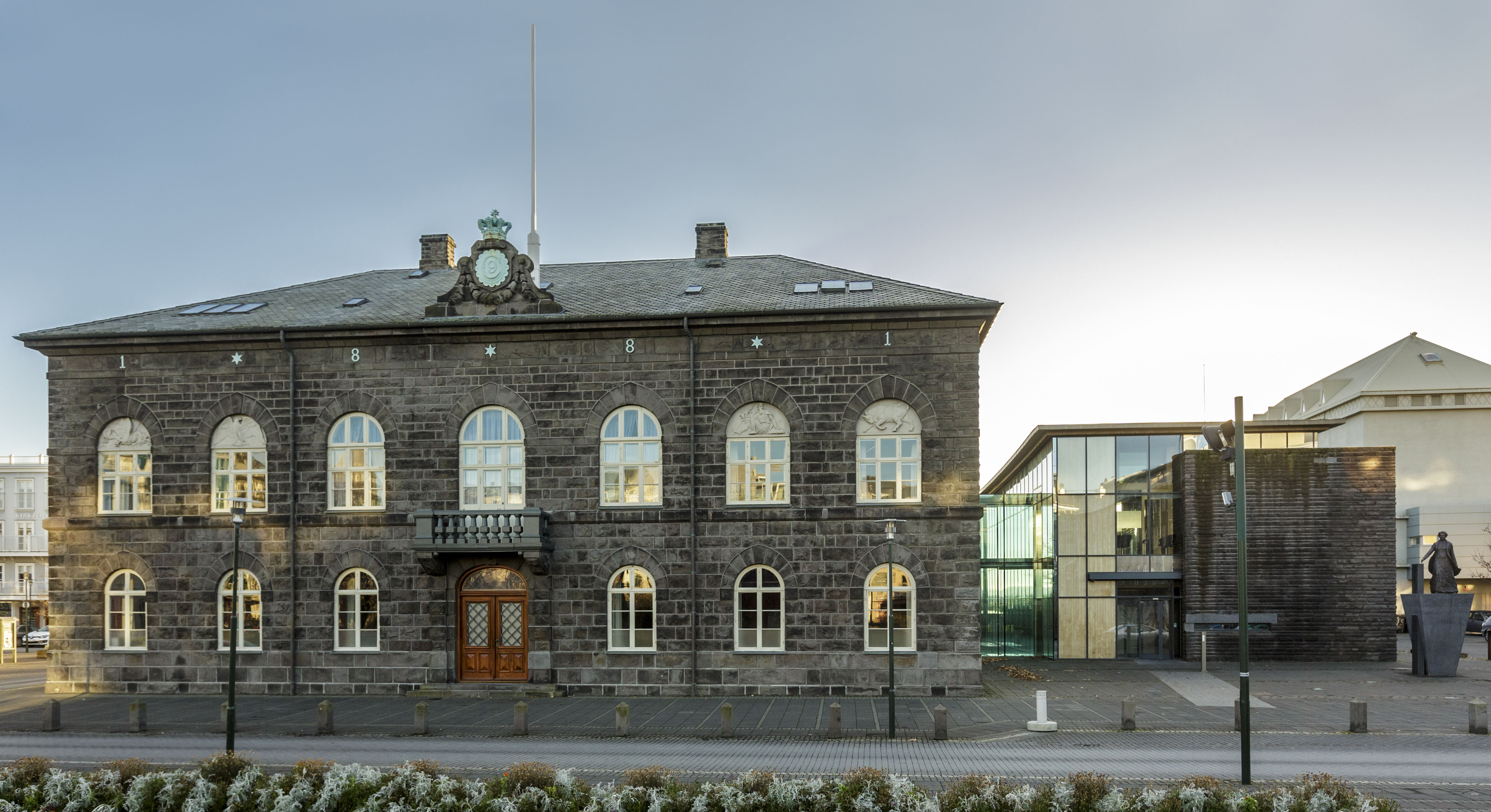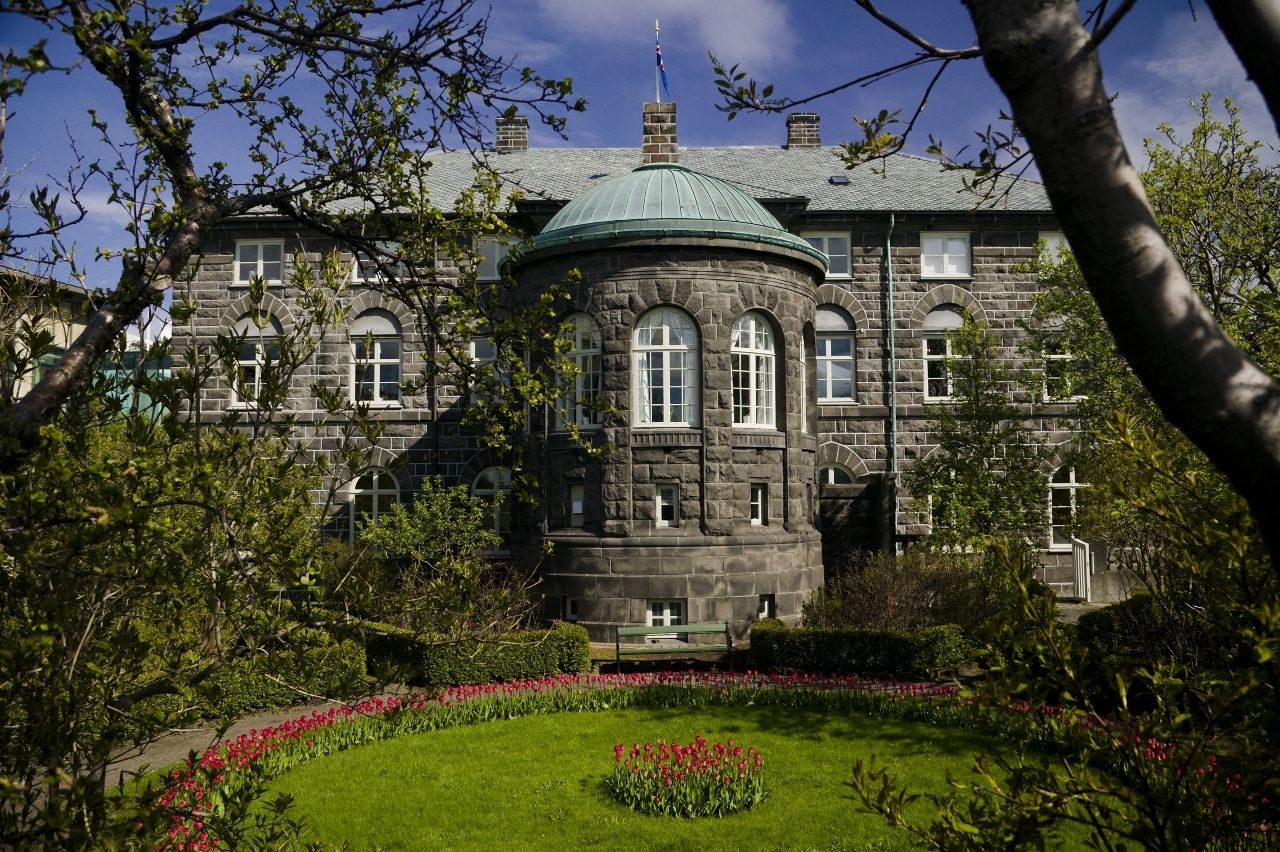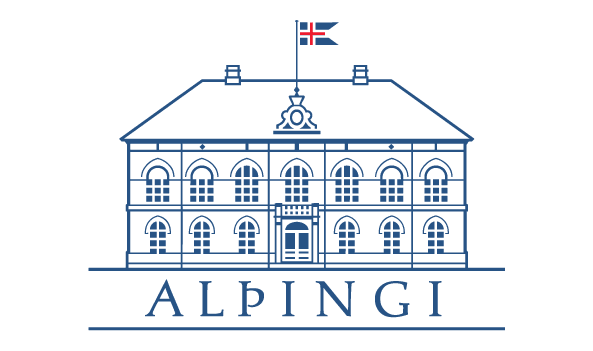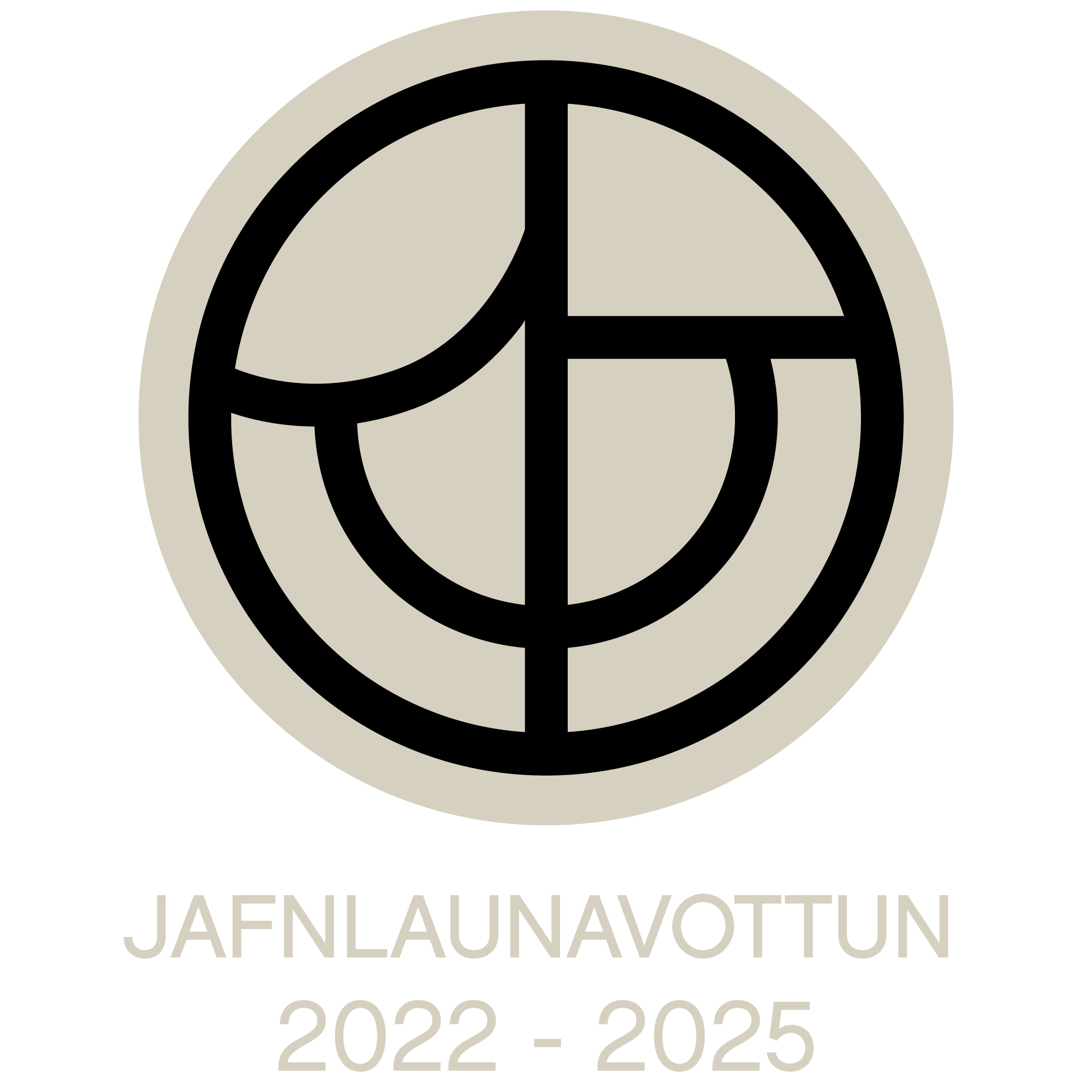The Parliament House
Parliament House, which stands on Austurvöllur square, was built in 1880–81. Two annexes have been added to the original building, Kringlan (the Rotunda) in 1908and Skálinn in 2002. The garden of Parliament House is Iceland's oldest public garden. Dating from 1893–95, it was largely the work of parliamentarian/bank director Tryggvi Gunnarsson.In 1867 Althingi resolved to mark the millennium of the settlement of Iceland byholding a national festival in 1874, and by building a Parliament House in Reykjavík, of Icelandic stone. There was some debate on a location for the new building: suggestions included the Arnarhóll grassfield (where a statue of the first settler, Ingólfur Arnarson, now stands) and Bakarabrekka (between the present Bankastraeti 7 and Laugavegur 1), but Austurstraeti was the final choice. Danish architect Ferdinand Meldahl (1827–1908), director of the Academy of FineArts in Copenhagen, designed the building, which was erected during 1880–81 of hewn basalt from Skólavörduholt hill (site of the present Hallgrímskirkja Church). The exterior of the walls is of bare dressed stone, while the interior is plastered.The façade (north side) of the building bears ornament, most noticeably the crown and crest of King Christian IX on the roof. Under the eaves the date 1881 is marked inmetal numerals interspersed with stars. Over four of the second-floor windows Iceland's guardian spirits are depicted in low relief: a giant, a great bird, a bull and a dragon.
 ©Bragi Þór Jósefsson
©Bragi Þór Jósefsson
Inaugural ceremony
When Parliament House was ceremonially inaugurated on 1 July 1881, the parliamentarians assembled in the new building before attending a religious ceremony in the Cathedral. Afterwards Governor General Hilmar Finsen (1824–86) delivered an inaugural address. He recounted the building history, and various problems that had occurred during the process, and then added: “... but now the building is completed,at the time agreed, and now stands as the most beautiful and sturdy building ever constructed in Iceland, a credit to our country and people, and a reminder to our descendants of the fact that, in the first electoral term of political freedom, the Icelandi cparliament, in collaboration with the Government, had the will and ability to make this magnificent and beautiful building a reality.”
Since 1881, all meetings of Althingi have been held at Parliament House, with the exception of ceremonial meetings held at Thingvellir, the site of the ancient Althingi, in 1930 (millennium of Althingi), 1944 (foundation of the Republic), 1974 (1100th anniversary of the settlement), 1994 (50th anniversary of the Republic) and 2000 (millennium of Christianity in Iceland).
The building
Initially Parliament House was not only home to the Althingi, but also housed three
national collections: the National Library, the Antiquities Collection (precursor of the
National Museum), and the National Gallery. An annexe known as the Rotunda
(Kringlan) was added in 1908. Originally a reception room for Ministers, it was later a
coffee-room, and is now a lounge. When the University of Iceland was founded in 1911
it was given the use of premises on the first floor of the building, as two of the collections
had been relocated. The University moved to its own premises in 1940. The office
of the Viceroy, and subsequently of the President of Iceland, was located in the building
1941–1973. Parliament House has long since ceased to provide sufficient space for all
parliamentary activities, and at present Althingi owns or rents several additional buildings
in the immediate vicinity. On the ground floor of Parliament House is the office
of the Speaker, along with facilities for parliamentary party groups and meeting rooms.
On the second floor are the parliament chamber, Members' lounge, the office of the
Secretary General and the Chamber Office. On the third floor is the gallery, and facilities
for journalists. The main entrance to Parliament House is now via the annexe,
which also houses various service facilities for Members, staff and guests, such as
meeting rooms, restaurant and kitchen. The annexe was designed by the architectural
studio Batteríid.
 ©Bragi Þór Jósefsson
©Bragi Þór Jósefsson



